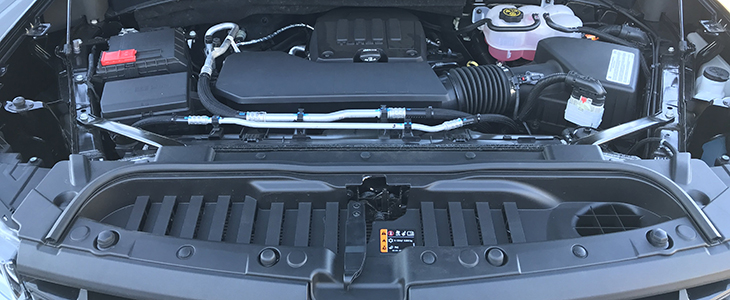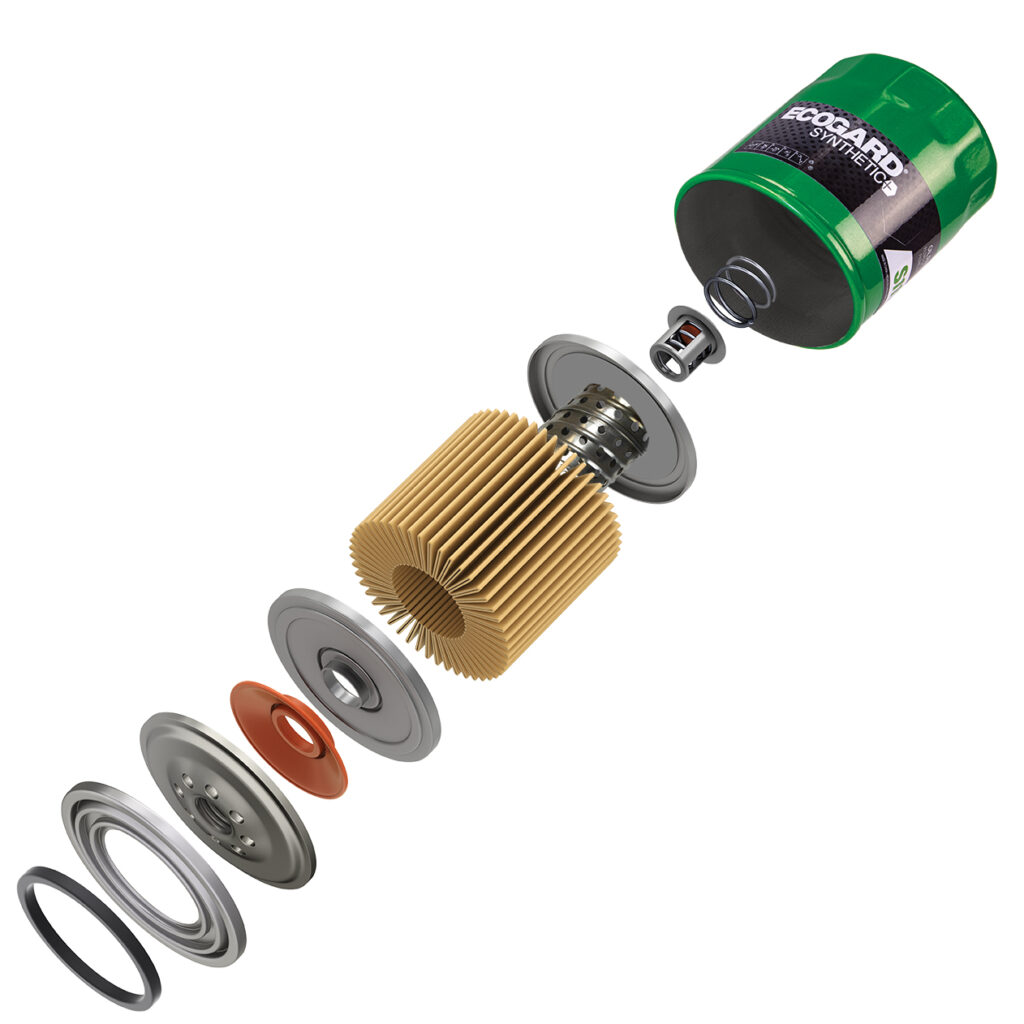
The Aftermarket Is Poised To See A Massive Wave Of Vehicles Requiring Extended Protection Oil Filters
Synthetic lubricants used to be something that drivers would buy out of personal preference, usually driven by a desire to put nothing but the best in their cars. Let’s be very clear – Those days are gone. Extended protection oil filters and synthetic lubricants have transitioned from being premium maintenance products to products that are a necessity for the optimum performance of many passenger vehicles. It’s time for the aftermarket to take notice and act.
OEMs Drive the Paradigm Shift
OEMs have driven this change in recent years with their attempts to comply with strict federal environmental legislation and the need to reduce carbon emissions – all while still producing the high performing vehicles that modern consumers demand. Over the last few years, we’ve seen all sorts of new technology in the form of radar-based sensors and cameras that have transformed the way we drive and look at vehicle safety. But the most significant changes – the ones making synthetic lubricants a requirement, are innovative new engine technologies embraced by just about every major automaker – domestic and foreign.
Factory-filled synthetic lubricants used to be a strictly European or high-performance sports car thing. Well, in the last 2 or 3 years the game has completely changed. It doesn’t matter if we’re talking about a new Toyota, Honda, Chevrolet or Ford – most of them have come from the factory filled with full synthetic lubricants and specify the continued use of synthetic lubricants for optimal operation and longevity. Just take a look at Chevrolet’s all-new 2.0L and 2.7L turbocharged in-line 4-cylinder engines, featured in everything from the compact Cruz to the full-size Silverado pickup, and you’ll understand.
Is the Aftermarket Prepared to Catch the Wave?
According to a report on lubricant market demand by Statisa, full-synthetic use in the U.S. is projected to increase by nearly 20% to 830.4 kilotons by 2025. While that’s a huge number, the increase seems a little underwhelming when we consider how many passenger cars already require synthetic lubricants and how many more are coming. And rest assured they are coming. Just read a few of the headlines published in the last few years by Honeywell, the brand that supplies turbocharger technology to nearly every automaker in the world. Back in 2016, they predicted that turbo penetration would near 50% by 2020. We’re now 2 months into 2020 and it seems like there are turbocharged vehicles everywhere. My own daily driver has a turbocharger. The new Nissan Altima that I’m renting because my car is in the body shop… also has a turbocharger.
Not convinced? Here are a few more popular vehicles that feature 2.0L 4-cylinder turbos:
- Acura RDX (62,000 sold in U.S. 2019)
- Alfa Romeo Giulia
- Alfa Romeo Stelvio
- Audi TT
- Audi A3
- Audi A4 (26,435 sold in U.S. in 2019)
- Audi A5 (23,686 sold in U.S. in 2019)
- Audi A6 (17,807 sold in U.S. in 2019)
- Audi Q3 (14,822 sold in U.S. in 2019)
- Audi Q5 (67,516 sold in U.S. in 2019)
- Audi Q7 (34,649 sold in U.S. in 2019)
- BMW 2 Series
- BMW 3 Series (47,827 sold in U.S. in 2019)
- BMW 4 Series (18,621 sold in U.S. in 2019)
- BMW 5 Series (38,709 sold in U.S. in 2019)
- BMW 7 Series
- BMW Z4
- BMW X1
- BMW X2
- BMW X3 (70,110 sold in U.S. in 2019)
- BMW X4
- BMW X5 (54,595 sold in U.S. in 2019)
- Buick Regal
- Buick Envision (33,230 sold in U.S. in 2019)
- Cadillac ATS
- Cadillac CTS
- Cadillac CT6
- Chevy Camaro (48,266 sold in U.S. in 2019)
- Chevy Malibu (120,302 sold in U.S. in 2019)
- Chevy Equinox (346,049 sold in U.S. in 2019)
- Chevy Traverse (147,122 sold in U.S. in 2019)
- Ford Focus
- Ford Fusion (166,045 sold in U.S. in 2019)
- Ford Escape (241,387 sold in U.S. in 2019)
- Ford Edge (138,514 sold in U.S. in 2019)
- Genesis G70*
- GMC Terrain (101,470 sold in U.S. in 2019)
- Honda Accord (267,567 sold in U.S. in 2019)
- Honda Civic (325,650 sold in U.S. in 2019)
- Hyundai Sonata (87,466 sold in U.S. in 2019)
- Hyundai Santa Fe*
- Hyundai Santa Fe Sport (127,373* sold in U.S. in 2019)
- Hyundai Veloster*
- Infiniti QX30
- Infiniti QX50 (18,616 sold in U.S. in 2019)
- Infiniti Q50 (25,987 sold in U.S. in 2019)
- Jaguar XE
- Jaguar XF
- Jaguar F-Type
- Jaguar E-Pace
- Jaguar F-Pace
- Jeep Cherokee
- Jeep Wrangler (228,042 sold in U.S. in 2019)
- Kia Optima (96,050 sold in U.S. in 2019)
- Kia Sportage (88,977 sold in U.S. in 2019)
- Kia Sorento (96,531 sold in U.S. in 2019)
- Kia Stinger (13,884 sold in U.S. in 2019)
- Land Rover Range Rover Evoque
- Land Rover Discovery Sport
- Land Rover Range Rover Velar
- Land Rover Range Rover Sport*
- Land Rover Range Rover*
- Lexus IS (14,920
- Lexus RC
- Lexus NX
- Lexus GS
- Lincoln MKZ
- Lincoln MKC (25,816 sold in U.S. in 2019)
- Lincoln Nautilus* (31,610 sold in U.S. in 2019)
- Mercedes-Benz CLA-Class (13,212 sold in U.S. in 2019)
- Mercedes-Benz GLA-Class (21,514 sold in U.S. in 2019)
- Mercede-Benz C-Class (48,875 sold in U.S. in 2019)
- Mercedes-Benz E-Class (39,857 sold in U.S. in 2019)
- Mercedes-Benz GLC-Class (72,439 sold in U.S. in 2019)
- Mercedes-Benz SLC-Class
- Mini Cooper (22,123 sold in U.S. in 2019)
- Mini Clubman
- Mini Countryman (14,042 sold in U.S. in 2019)
- Porsche 718 Boxster
- Porsche 718 Cayman
- Porsche Macan
- Subaru Forester (180,179 sold in U.S. in 2019)
- Subaru WRX (21,838 sold in U.S. in 2019)
- Volvo S60 (21,190 sold in U.S. in 2019)
- Volvo V60
- Volvo V90
- Volvo S90
- Volvo XC40 (17,647 sold in U.S. in 2019)
- Volvo XC60 (30,578 sold in U.S. in 2019)
- Volvo XC90 (35,760 sold in U.S. in 2019)
- VW Golf (37,393 sold in U.S. in 2019)
- VW Beetle (17,215 sold in U.S. in 2019)
- VW Passat (14,123 sold in U.S. in 2019)
- VW Tiguan (109,963 sold in U.S. in 2019)
- VW Atlas (81,507 sold in U.S. in 2019)
Sources: Autoblog | Good Car Bad Car
As automakers increasingly turn to turbo technology to further fuel economy and comply with emissions regulations, Honeywell expects them to sell in excess of 230 million vehicles with turbocharged engines between 2017 and 2021. If we figure that average vehicle age is about 11 years, we can roughly estimate that about half of all vehicles in operation in 3-5 years and beyond, will be turbocharged. One thing we know about turbocharged vehicles is that they rely heavily on high-quality lubricants for optimum performance and longevity. The numbers are already too significant to ignore and yet, many installers are unprepared. To service the coming wave of synthetic factory-filled vehicles, installers are going to need to stock a much higher percentage of extended protection oil filters. Most owners won’t be able to come in for service with a choice of different oil change options. Synthetic will be the only acceptable option if they expect to maximize fuel efficiency and keep their cars as maintenance-free as possible.
Optimized Oil Changes = Happy Customers

Extended protection oil filters are better equipped for filtering synthetic lubricants because they feature a synthetic blend media which offers higher efficiency and strength compared to the cellulose paper used in conventional oil filters. With this improved media, synthetic-ready oil filters can have twice the dirt holding capacity while filtering smaller particles. That extra capacity is critical if the goal is to maximize the oil change interval while fully protecting the engine and common critical components such as a turbocharger.
Tags: Chevrolet, Honeywell, L4, Lubricants, Silverado, Synthetic, Synthetic Oil, Synthetic Oil Filters, Turbo, Turbocharged
Categories: Aftermarket Insights, Synthetic Oil FiltersShare this entry